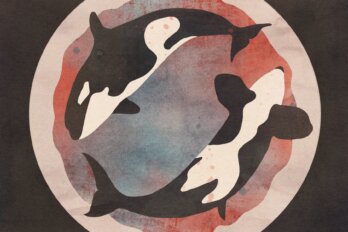georgetown — It’s Saturday morning in Guyana’s capital, and Stabroek Market, a raggedy knock-off of a North American strip mall, is already jammed with gypsy cabs. The customized Toyota coupes and chrome-clad Nissan minivans sit packed with paid-up passengers, waiting for just one more fare. Packs of stick-skinny preteen girls, giggling on the stroll, show off their scarlet nail polish, which dazzles under the tropical sun.
A huge fellow in Medusa-like dreadlocks and Adidas sportswear holds out a painted wooden birdcage. Perched inside, so small as to be almost invisible, is a brown bird. The owner lets us peer through the bars: the bird has a red beak and liquid brown eyes like maple syrup. Peep, cheep, it calls faintly.
Goliath isn’t selling tweety-bird, he’s displaying it. A moment later, another big guy, in a silver track suit, strides between us and hoists his own caged sparrow skyward, giving the other man’s a look of fierce disdain. Their mute posturing is unmistakable: they are haughty rivals, showing off, ready to do battle.
“That bird? Is what we call a seed finch,”explains Junior, my driver, as we navigate the quick-eyed crowd. “The people catch them wild, out in the fields down south. And little by little, they train them to sing. Every Sunday they have these races. Only they don’t fly them it’s about the rackle.”
“The rackle?”
“They have some secret way of judging which bird sings the most melodically, and they compete like crazy men. You get these men who spend big on a little bird, and if their wives find out, they get mad: ‘What? You spent all that money on a dam’ bird? An’ nothin’ on me? What you take me for — your dam’fool?’ ” Junior’s recital is so pitch-perfect it must be based on personal experience.
Now I can see them everywhere, these proud bird warriors of Stabroek Market, all wearing gold watches and athletic tank tops. They’re collecting and facing off against each other. The presence of the birdmen in the busy, ramshackle square is incongruous: large-shouldered men doused in bootleg aftershave, all sporting mirrored sunglasses, Nike runners, and intricately coiffed dos, and each demurely holding a filigreed birdcage as if it’s a designer handbag.
Inside the tin-roofed warren of a market building, the stall vendors are relaxed and friendly. Many are selling pirated CDs and counterfeit clothes. Elephant Man or Shaggy, two US dollars, take your pick. Men’s Calvin Klein underwear, four bucks; Dockers khakis, twelve. The poly-wrapped bags of unshelled peanuts, at thirty-five cents, look dubious.
Des, a birdcage vendor of East Indian descent, sits alone in his stall, itself a barred cage. He’s surrounded by scores of the handmade wood-and-wire contraptions. A customer picks carefully through his stock of fresh green seed grass: food for the champs. Des says the trick is making the cage bars open enough so the bird can be displayed, but narrow enough to prevent the tiny prisoner from escaping. Junior adds that Guyana has a whole craft industry devoted to the birds’ capture and training.
According to one method, the enterprising trapper sets a caged male seed finch in a shady, treed spot at the margin of the grasslands and waits patiently for its peeping to attract a rival male to his net, earning maybe eight American dollars for each one caught. The trappers must be getting good, because in 2002 the Iwokrama International Centre for Rain Forest Conservation and Development in central Guyana began a research project to study the national songbird trade after locals complained the two main species were declining.
The scientific name for the large-billed seed finch, or twa twa, is Oryzoborus crassirostris; its lesser-billed cousin, the towa towa or Oryzoborus angolensis, battles just as keenly. The local name for them is “bastard.”
“Bastard? Isn’t that a bit rude for such a pretty little thing?” I ask.
“You don’t know deese birds, mon! Dey tough as concrete nails,” insists a bird vendor in the stall next to Des’s. “Some of dem whistle, some of dem be quiet. But dey all come into de fight.”
“What do they cost you?”
“Good whistle-bird cost me plenty. You can use de silent ones to catch de calling birds, and a gambling man, he pays five, ten t’ousand for a good callin’ bird.”
He means in Guyanese currency, surely. So these ubiquitous birds cost as much as sixty dollars?
“Wha’ you talkin’ ‘bout? Ten t’ousand US, mon! Dey more valuable den a car!”
We stare at the wee bits of chirping fluff. The birds are evidently far more than mere fashion accessories — they’re high-end status symbols. It’s like Fifth Avenue, except here it’s the men who carry the Gucci bags, and the bags are alive, and they cost more.
“I’d like to see this birdsong fighting,” I venture. “When does it happen? ” “Sundays, mon!” says Junior. “But they not lookin’ for visitors.”
“No?”
“Lots o’ ruffians hangin’ about, bad for trouble. We got better things to do.” As we drive away through the square, the men with the birdcages are standing stock-still, poised like runway models at the end of their turns, protecting their tiny charges from the heat of the afternoon sun with their own shadows.





